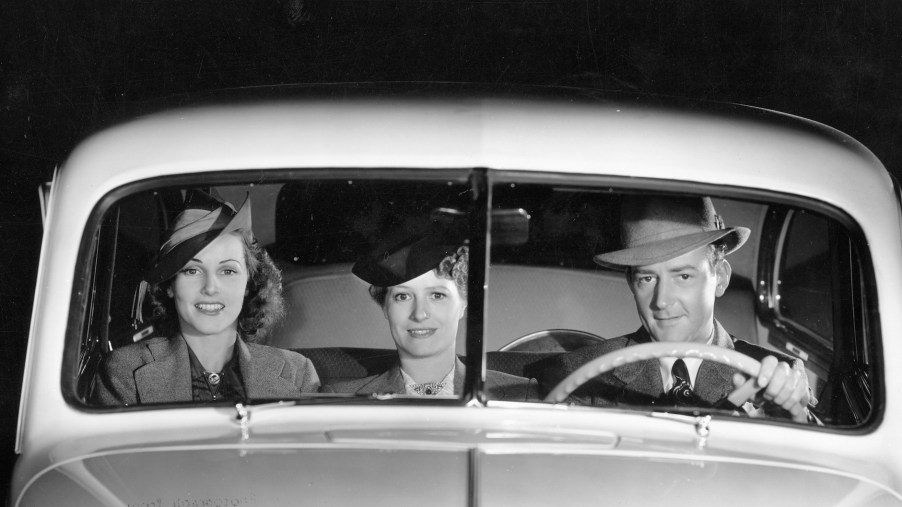
Why Did Front Bench Seats Go Away, and Are They Coming Back?
Classic muscle cars of the ’50s are a nostalgic reminder of simpler times. In most movies depicting that era, the front bench seat in cars was omnipresent. Girls could cuddle with their guys as they cruised the American highways. But as times changed, drive-in movie theaters disappeared, safety regulations grew stricter, and front bench seats faded from most vehicles.
Today, bucket seats are the norm for drivers and front-row passengers. However, as the growing electric vehicle segment grows, we may soon see a change in front seating.
Why automakers stopped installing front bench seats
CNBC recently took a deep dive into automotive history to determine why manufacturers did away with front bench seats. After all, the seating arrangement, derived from horse-drawn carriages, was “perfect for squeezing several passengers in a car and were great for watching the drive-in movies that became popular in postwar America,” CNBC reported.
But the demand was short-lived as car owners turned their attention to smaller sports cars equipped with bucket seats. The Ford Mustang and Chevy Corvette were two of the first models to do away with front-row benches.
In the ’70s, safety became first and foremost with the advent of seatbelts and airbags. The center seat’s configuration made it impossible for automakers to restrain three passengers safely, making the change to bucket seats all the more necessary.
That change made way for the center consoles, media systems, and gear shifters we’re accustomed to today. CNBC found that few vehicles on the market today have front benches. And if they do, they’re “almost entirely trucks and full-size SUVs.”
Will front bench seats make a comeback?
“The front bench seat belonged to another era — perfect for slower highway speeds, no seat belts, and dates to the drive-in movie theater,” Jalopnik noted.
Chrysler stopped installing front these seats in its product lineup in 2004. Ford followed suit in 2011.
“The customers seem to have decided the issue,” GM’s vice president of product engineering told The Chicago Tribune. “The reason we dropped bench seats was that the demand had dropped. If you tried to go back to bench seats, people would complain. They prefer bucket seats and split benches.”
But as the automotive trend leans toward EV technology, the front seating of yesterday might make a comeback. Some electric prototypes and autonomous concept designs showcase front-row bench seating.
In fact, Reuters noted that Audi AI and Infiniti QX Inspiration “point to a future of living-room-like comfort in cars with flat floors and ample space for sofa-like bench seats.”
Eliminating the space needed for an internal combustion engine, EVs offer room for larger, more comfortable seats. Nixing the driveshaft and exhaust suddenly makes the center seat more accommodating for passengers.
The design chief for Infiniti told Reuters that “these changes make it possible for the return of the bench seat in the front and rear — a throwback to American cars of a bygone era.”
Current vehicle models with this old-timey seating
Several pickup trucks and SUVs still offer front this old-fangled seating.
The Ford F-150 and Ram 1500 pickup trucks offer front bench seating with a foldable center seat that transforms into an armrest with integrated cupholders.
Also, the GMC Sierra premium pickup truck has the most luxurious front bench seat in the industry. The 40/20/40 configuration features power-adjustable, heated seating with memory settings and leather upholstery.
And the cavernous GMC Yukon comes with seating for nine passengers and 121.1 cubic feet of cargo space. It’s the largest vehicle offering a front bench seat. The Chevy Tahoe also has an impressive three-row seating configuration that can comfortably accommodate nine occupants.
According to Motors and Wheels, “Chevrolet stopped putting front bench seats on Impalas” in 2013. It was the last passenger car to offer front bench seating.


